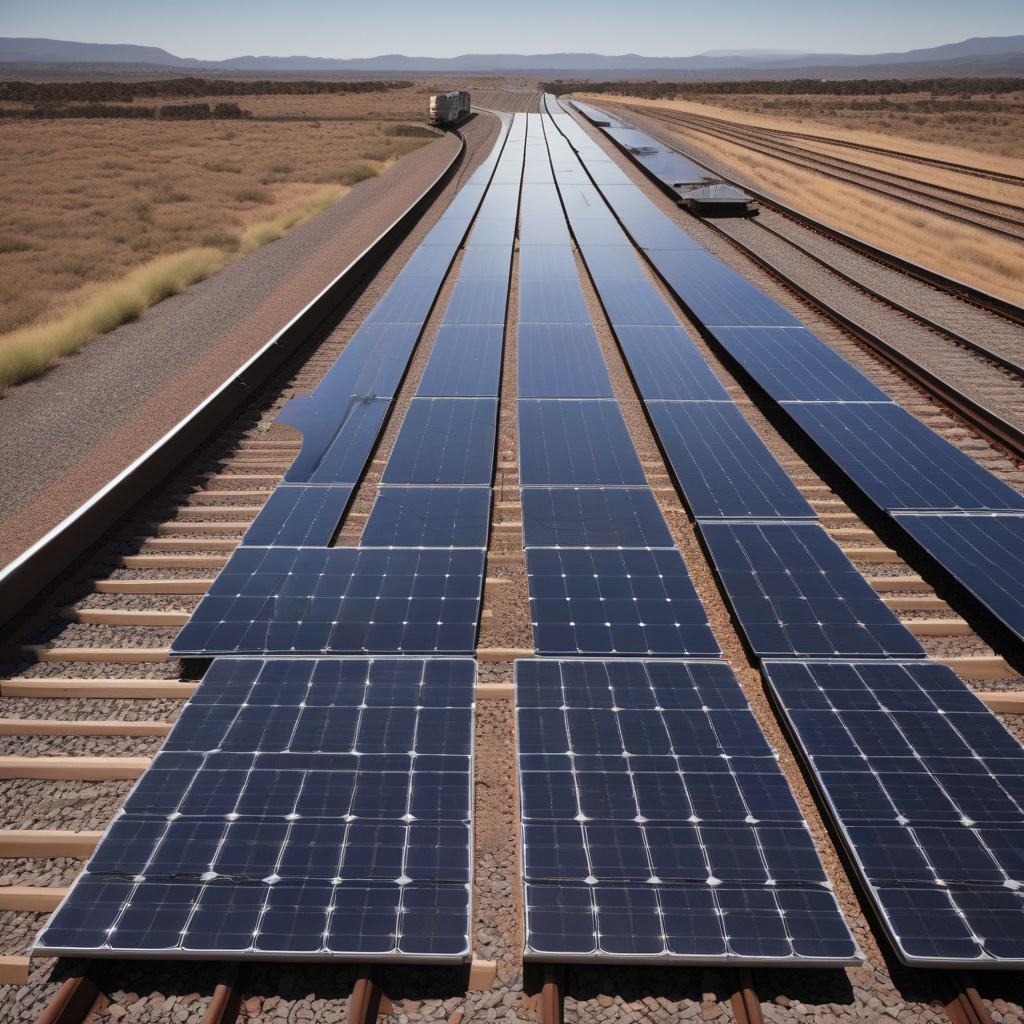World’s First Removable Solar Plant on Active Rail Lines with 16 MWh Output Now Switched On
A Swiss company commissioned a removable solar installation on an operational railway line in western Europe, marking a significant step towards sustainable energy solutions. This innovative project involves the implementation of a solar power plant directly on active rail lines, a concept that has never been seen before on such a scale.
The groundbreaking initiative aims to harness the untapped potential of railway infrastructure to generate clean energy while minimizing land use and environmental impact. With a capacity of 16 megawatt-hours (MWh), the solar plant is designed to power essential railway operations, including lighting, signaling systems, and other electrical components. By integrating renewable energy sources into existing rail networks, the project sets a new standard for eco-friendly transportation systems.
One of the key advantages of the removable solar plant is its flexibility and scalability. The modular design allows for easy installation and relocation, making it suitable for various railway configurations and locations. This adaptability is particularly valuable in regions where traditional solar farms may not be feasible due to space limitations or land use restrictions.
Furthermore, the innovative technology used in the solar panels ensures optimal energy efficiency and performance, even in challenging environmental conditions. By maximizing solar exposure and minimizing energy loss, the plant can generate a significant amount of electricity throughout the year, contributing to the overall sustainability of the railway network.
In addition to its environmental benefits, the removable solar plant also offers economic advantages for railway operators. By reducing reliance on grid electricity and fossil fuels, the project helps to lower operational costs and mitigate the impact of energy price fluctuations. Over time, the investment in renewable energy infrastructure is expected to yield long-term savings and enhance the financial resilience of the railway industry.
Moreover, the integration of solar power into rail systems promotes energy independence and resilience, ensuring uninterrupted operations even in the event of grid outages or disruptions. By diversifying energy sources and increasing self-sufficiency, railway companies can enhance their reliability and reduce vulnerability to external factors.
As the world transitions towards a more sustainable and carbon-neutral future, initiatives like the removable solar plant on active rail lines play a crucial role in driving innovation and progress. By combining renewable energy generation with existing infrastructure, this pioneering project demonstrates the potential for creative solutions to complex environmental challenges.
In conclusion, the commissioning of the world’s first removable solar plant on active rail lines with a 16 MWh output represents a significant milestone in the journey towards greener and more efficient transportation systems. With its innovative design, environmental benefits, and economic advantages, this project sets a precedent for sustainable energy integration in the railway industry, paving the way for a more sustainable future.
solar, railway, sustainability, innovation, renewableenergy












